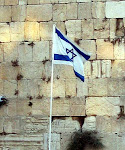By Karin Kloosterman
It was a strange twist of fate: At the same time as an Israeli emergency response team was planning a program to train Chilean professionals in how to handle mass casualty situations, disaster struck in Chile, when an 8.8 Richter Scale earthquake hit the country in February, killing hundreds.
Israel's long history of coping with terror and formidable road accidents has prepared the country to deal with the worst, says Gila Hyams who heads the Teaching Center for Trauma Mass Casualty Situations at Rambam Hospital in Haifa, Israel.
.jpg) While Hyams was aware of the earthquake in Chile, she tells ISRAEL21c that she could never have imagined the scope of the disaster because it wasn't emphasized in the media she was exposed to in Israel. "When we arrived there they took us to the area of the tsunami, which was caused by the earthquake, and we saw something unbelievable," she recounts.
While Hyams was aware of the earthquake in Chile, she tells ISRAEL21c that she could never have imagined the scope of the disaster because it wasn't emphasized in the media she was exposed to in Israel. "When we arrived there they took us to the area of the tsunami, which was caused by the earthquake, and we saw something unbelievable," she recounts."We've learned with blood"
In their workshop, the Israeli team, comprised of doctors and members of the Israel Defense Forces (IDF), focused on communication and infrastructure planning - the two most problematic areas in the Chilean experience. And since by Latin American standards Chile is considered a very developed country, it is hoped that the ripple effects of the workshop will be better emergency responses in the entire region.
Each of the six Israelis led a working group, through which they shared the Israeli experience, unique in the world. Hyams says that the workshop "was a real eye opener" for the participants. "We've learned through blood, through the mass causalities we have here [in Israel] from terror attacks," she says. At the same time, Hyams feels compelled to mention "... the heroism of the medical teams that worked in such awful conditions during the catastrophe."

"These people get paid for this and we regulate what they need to do," explains Hyams, who has also brought a number of teams to the United States where American peers learn about the Israeli response to emergencies.
She has been to Dayton, Ohio; to a conference at New York University; another in Dallas, Texas; and most recently her team was in Detroit, to trade tips with specialists there. "We learn about trauma, and it is mass casualty we teach. We have more experience in this area unfortunately," she says. Also, due to Rambam's expertise with mass casualties, the center recently held a course in trauma for medical personnel in NATO countries.
Stressing communications and infrastructure
Team member Dr. Amir Blumenfeld, former head of the IDF Trauma Unit, relates that communications were so uneven following the earthquake in Chile that "... when we arrived there we found that... in some of the areas nobody knew what had happened." And Hymans adds, "There weren't enough people to treat the injured. They couldn't even find bandages.
"One of the most important points to stress when dealing with this situation is collaboration between ambulance, police and army and hospitals. They didn't have this in Chile. We have many things in place [in Israel], on our computers, and a network that connects representatives, on call, who are ready to deal with a state of mass casualties," he tells ISRAEL21c.
"When they get the calls they will all arrive to the same place for command and control, which will include a rep from the ministry of health, the hospitals, police and army." This is so all the forces can be united on a common front. And while it sounds intuitive, a lack of communication and ground control was one of the criticisms that the Bush Administration faced over its response to Hurricane Katrina in New Orleans.
Hyams lauds the Jewish community in Santiago for helping to rebuild the local medical support system: "The pictures here are very difficult. Four months after the disaster there is still damage everywhere. Where hospitals once stood, there are now tents," she says, pointing out that the Jewish community's assistance has been very significant.
She would like to return to Chile and is in contact with MASHAV, Israel's National Agency for International Development Cooperation, in the hope that the organization will help sponsor more workshops or bring Chileans to Israel to learn more. Her idea is to organize more workshops through a local MASHAV office in Santiago, set up to service the wider Latin American region.
The recent June workshop in Chile was sponsored by Israel's Rambam Hospital; Israel's Ministry of Health, the Jewish community in Chile, and the Las Condes Hospital, a private medical facility in Chile.

















